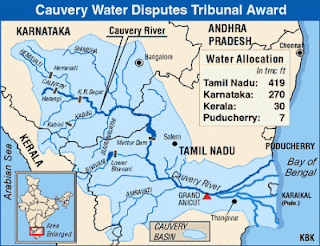WORLD FOOD PROGRAMME
OBJECTIVE:
The UN World Food Programme was established in 1960 with objectives of Preparation for emergencies, restoration and rebuilding of lives after emergencies, reduction of chronic hunger and malnutrition and help countries reduce hunger by capacity building.
THREATS ASSESSED BY WFP:
Poverty, uneven food distribution, natural disaster, deforestation and low education levels are listed among the threats to food security by WFP.
FOCUS AREAS:
Reduction of Child Mortality, Improvement of maternal health, control and eradication of diseases and enabling environment stability in agricultural operations.
WORKING MECHANISM:
The programme uses food as an incentive to help the poor to gain education, provide healthcare and work to build assets.
WFP IN INDIA:
In India WFP aims to combat malnutrition and invest in human resources, help improve immediate food security for selected target groups, maximize the active participation of women, advocate joint forest management, help strengthen distribution channel for local food grain, increase agriculture production and create employment

.jpg)







.jpg)
.jpg)










